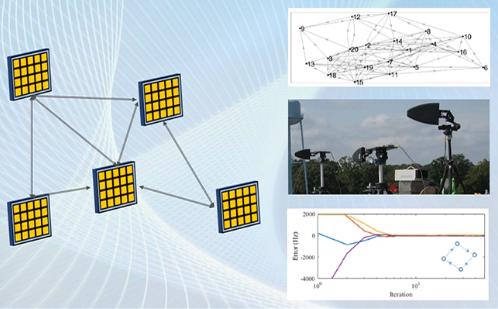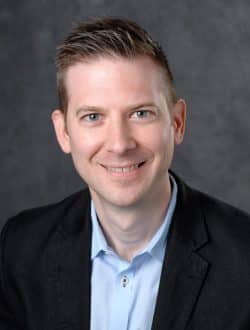Distributed Phased Arrays: Challenges and Recent Progress
A virtual event featuring IEEE MTT-S Distinguished Microwave Lecturer Prof. Jeffrey Nanzer from Michigan State University
Sponsored by the IEEE AP/MTT/EMC Joint Chapter of the Syracuse Section and the IEEE Microwave Transactions and Technology Society Distinguished Microwave Lecturer Program

There has been significant research devoted to the development of distributed microwave wireless systems in recent years. The progression from large, single-platform wireless systems to collections of smaller, coordinated systems on separate platforms enables significant benefits for radar, remote sensing, communications, and other applications. The ultimate level of coordination between platforms is at the wavelength level, where separate platforms operate as a coherent distributed system. Wireless coherent distributed systems operate in essence as distributed phased arrays, and the signal gains that can be achieved scale proportionally to the number of transmitters squared multiplied by the number of receivers, providing potentially dramatic increases in wireless system capabilities. Distributed array coordination requires accurate control of the relative electrical states of the nodes. Generally, such control entails wireless frequency synchronization, phase calibration, and time alignment, but for remote sensing operations, phase control also requires high-accuracy knowledge of the relative positions of the nodes in the array to support beamforming.
This lecture presents an overview of the challenges involved in distributed phased array coordination, and describes recent progress on microwave technologies that address these challenges. Requirements for achieving distributed phase coherence at microwave frequencies are discussed, including the impact of component non-idealities such as oscillator drift on beamforming performance. Architectures for enabling distributed beamforming are reviewed, along with the relative challenges between transmit and receive beamforming. Microwave and millimeter-wave technologies enabling wireless phase-coherent synchronization are discussed, focusing on technologies for high-accuracy internode ranging, wireless frequency transfer, and high-accuracy time alignment. The lecture concludes with a discussion of open challenges in distributed phased arrays, and where microwave technologies may play a role.
This presentation is open to all and both experienced and novice level engineers are welcome! Please register below if you would like to receive last minute notifications.
Date and Time
Location
Hosts
Registration
-
 Add Event to Calendar
Add Event to Calendar
Loading virtual attendance info...
Speakers
 Prof. Jeffrey Nanzer – Associate Professor at Michigan State University
Prof. Jeffrey Nanzer – Associate Professor at Michigan State University
Biography:
Jeffrey Nanzer (S’02-M’08-SM’14) received the B.S. degree in electrical engineering and computer engineering from Michigan State University, East Lansing, MI, USA, in 2003, and the M.S. and Ph.D. degrees in electrical engineering from The University of Texas at Austin, Austin, TX, USA, in 2005 and 2008, respectively. From 2008 to 2009, he was a Postdoctoral Fellow with Applied Research Laboratories, The University of Texas at Austin. From 2009 to 2016, he was with The Johns Hopkins University Applied Physics Laboratory, Laurel, MD, USA. In 2016, he joined the Department of Electrical and Computer Engineering, Michigan State University, where he held the Dennis P. Nyquist Assistant Professorship from 2016 through 2021. He is currently an Associate Professor. He directs the Electromagnetics Laboratory, which consists of the Antenna Laboratory, the Radar Laboratory, and the Wireless Laboratory. He has published more than 200 refereed journal and conference papers, one book, and two book chapters, and holds four patents. His research interests are in the areas of distributed phased arrays, millimeter-wave imaging, remote sensing, antennas and arrays, millimeter-wave photonics, and electromagnetics.
Dr. Nanzer was a founding member and the First Treasurer of the IEEE APS/MTT-S Central Texas Chapter. He is also a member of the IEEE Antennas and Propagation Society Education Committee and the USNC/URSI Commission B. He was a recipient of the Google Research Scholar Award in 2022, the Outstanding Young Engineer Award from the IEEE Microwave Theory and Techniques Society in 2019, the DARPA Director’s Fellowship in 2019, the National Science Foundation (NSF) CAREER Award in 2018, the DARPA Young Faculty Award in 2017, and the JHU/APL Outstanding Professional Book Award in 2012. He is also an Associate Editor of the IEEE Transactions on Antennas and Propagation.
Agenda
5:45pm - Webex link live
6-7pm - Presentation
7-7:15 - Questions and Discussion

